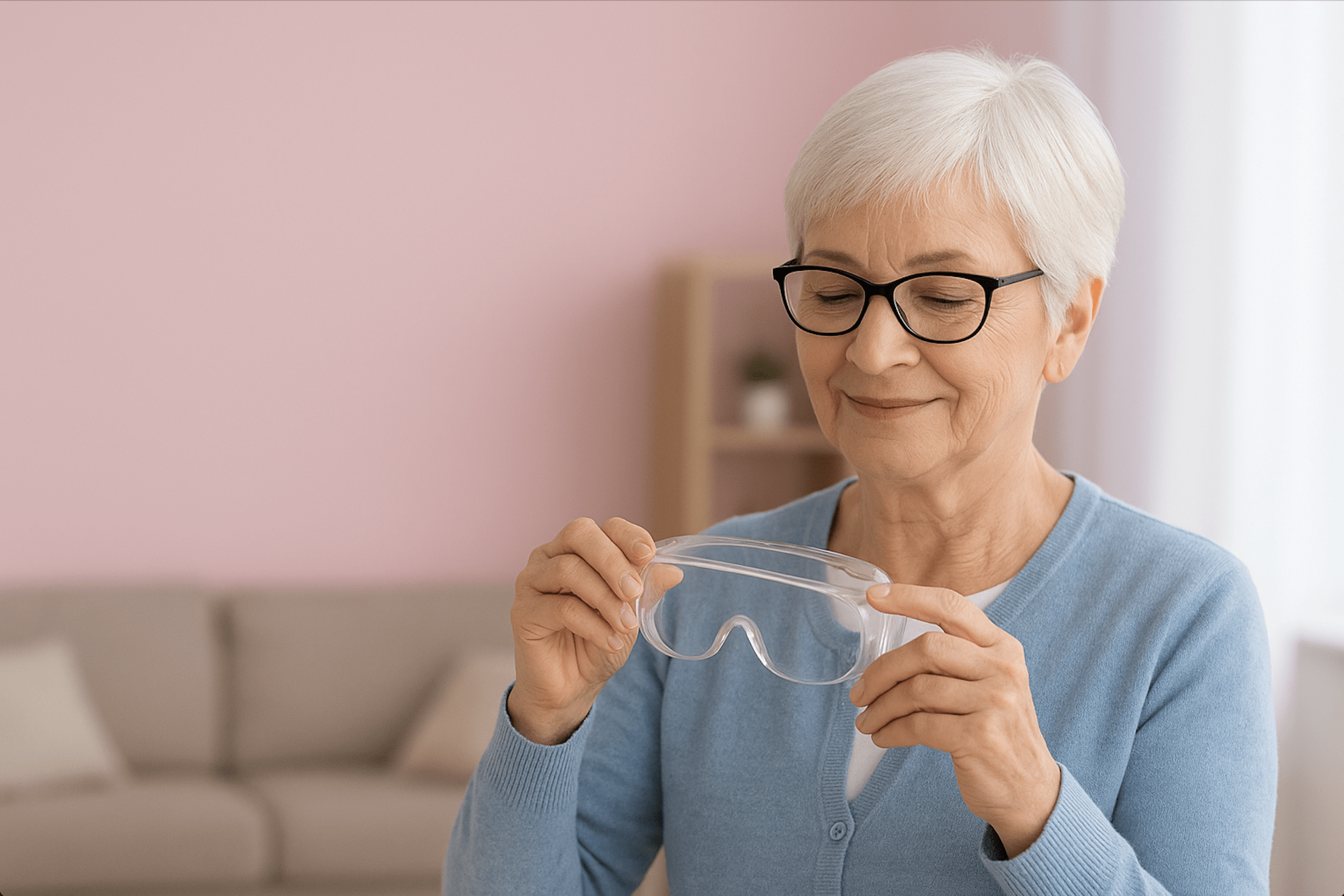Every year, thousands of people in the UK experience eye injuries that could have been avoided. During Eye Injury Prevention Month, Solasta Healthcare is raising awareness of how simple protective steps can prevent serious damage — especially for those living with cataracts or reduced vision.
Cataracts cause cloudy or blurred vision, making it harder to judge distances, notice hazards, or react quickly. This increases the risk of falls, accidents, and even preventable eye injuries. Protecting your eyes isn’t just about comfort — it’s about safety and long-term vision health.
Understanding the Link Between Cataracts and Eye Injuries
Cataracts gradually cloud the lens of the eye, making the world appear foggy, dim, or yellowed. This can affect:
- Depth perception – making stairs, steps, or uneven ground harder to navigate
- Contrast sensitivity – making it more difficult to spot small objects or obstacles
- Night vision – increasing glare and halos around lights
Because of this, people with cataracts are more vulnerable to falls, foreign body injuries, or accidents involving sharp objects or chemicals.
Top 7 Eye Injury Prevention Tips for Patients with Cataracts
1. Wear Protective Eyewear for Home and Outdoor Tasks
Even simple household tasks can cause injury. Always wear protective glasses or goggles when:
- Gardening or pruning plants
- Using cleaning sprays or chemicals
- Doing DIY, drilling, or sanding
- Cooking with hot oil
Protective eyewear acts as a shield against debris, dust, or splashes that could damage the cornea or worsen existing vision issues.
2. Improve Lighting Around the Home
Cataracts make it harder to see in dim light. Ensure all rooms, staircases, and hallways are well-lit. Use brighter bulbs, install night lights, and reduce glare by adding lampshades or blinds to diffuse direct light.
3. Keep Floors and Walkways Clear
Reduced depth perception increases the risk of tripping. Remove loose rugs, trailing cables, and clutter from floors. Consider using non-slip mats and keeping pathways free of obstacles, especially at night.
4. Wear Sunglasses with UV Protection
UV light accelerates cataract formation and can also damage the retina. When outdoors, wear UV-blocking sunglassesand a wide-brimmed hat. This reduces glare and helps prevent further eye strain.
5. Avoid Sudden Movements or Heavy Lifting
Blurry vision can affect balance. Take care when bending, lifting, or climbing ladders. Move slowly, use handrails where possible, and avoid risky tasks until your vision is fully assessed.
6. Schedule Regular Eye Examinations
Regular eye tests are crucial — not just to monitor cataracts, but to check for other sight-threatening conditions like glaucoma or macular degeneration. Early detection allows your ophthalmologist to adjust your prescription or recommend cataract surgery at the right time.
7. Consider Cataract Surgery for Long-Term Safety
Cataract surgery is the most effective way to restore clear vision and reduce the risk of accidents caused by poor sight. Modern cataract surgery is quick, painless, and performed under local anaesthetic. Most patients notice clearer vision within days.
At Solasta Healthcare, our consultant ophthalmologists offer personalised cataract assessments and premium lens options, helping patients regain independence and confidence in their daily lives.
If you’re considering private cataract surgery, book a consultation with an experienced specialist today to explore your options and regain clear vision without the wait!
Start Your Journey at Solasta Healthcare!
Call today: 028 40 648 486
Email: info@solastahealthcare.com

